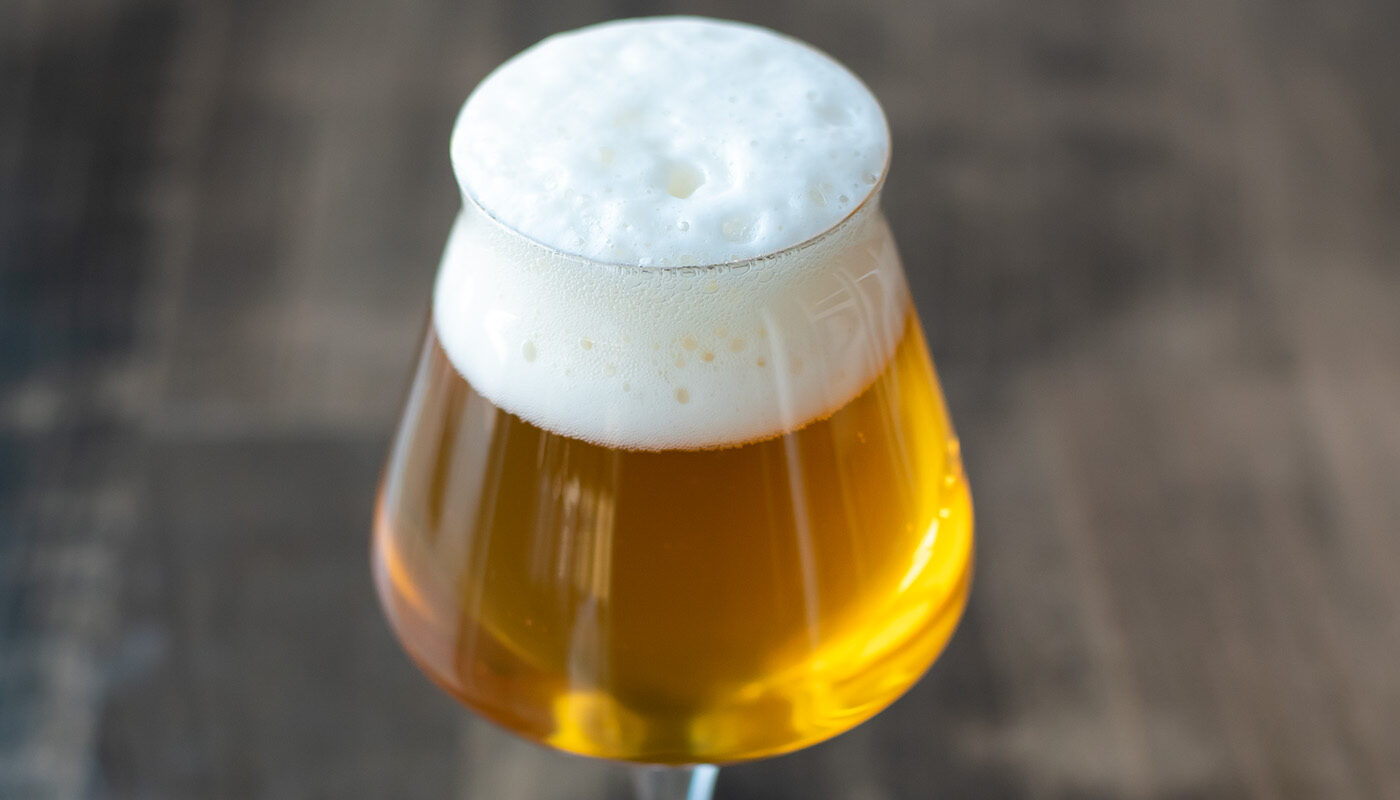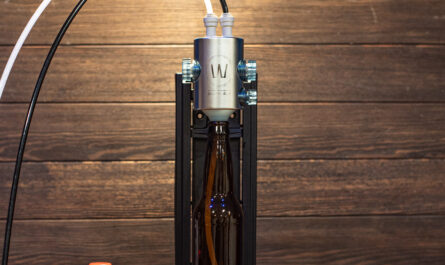I see this question come up a lot. And to be honest I’ve often asked myself the same question numerous times. The truth is there are a tremendous amount of factors that go into producing really high-quality beer. Brewing commercial quality beer is easier than you think, but at the same time, it’s really difficult! In order to reach the next level of brewing beer, we really need to take a good hard look at the cold side of the equation.
Most of us compare our homemade concoctions to some of the best commercial examples on the market…beer we already know and love. Just think about this scenario for one second. Now I KNOW you can make good beer in a plastic bucket, but I don’t think it’s completely fair to compare bucket beer to one made with state-of-the-art commercial equipment and practices. The only way to really get homebrew to not taste like homebrew is to treat it like it’s not homebrew. What exactly does that mean? Let me dive into some common pitfalls I’ve experienced below.
Neglecting Fermentation Temp Control
Great beer is made during the fermentation process, not the hot side. This mindset was an area I neglected as a beginner. I cannot stress this one enough. By far the biggest improvement in my homebrew came from both proper pitching temps and temperature-controlled fermentation. It seems counterintuitive but yeast both thrive and produce more esters at higher temps. Keeping your fermentation temp in the suggested manufacturer range will produce higher quality beer.
Some yeast strains will really thrive at hotter temps and produce phenomenal results. The truth is most ales should fall in the 66-72°F range. See two common off-flavors that haunted my homebrew.
You’re Probably Underpitching Yeast
Underpitching (not pitching enough yeast) is a huge factor in producing off-flavors in beer. In some of the big IPAs I brew (OG 1.070), I pitch close to 400 billion cells. That’s 4 standard liquid yeast packs or 2 double pitch packs. It’s a lot of yeast (and money), but it ensures a strong healthy fermentation. If you use brewing software, it will help you to calculate how much yeast you should actually pitch. If you want to save some money, you should make a yeast starter.
I also invested in a wort aeration system using pure oxygen. Yeast needs adequate oxygen to do its job well. More oxygen in your wort will lead to better overall fermentation and is also said to increase attenuation. Stressed yeast or subpar fermenting conditions will inevitably lead to off-flavors in your final beer. Shaking a carboy will only go so far in terms of oxygenating wort. I could argue that it’s simply not enough if I were to be really picky.
Remember, happy yeast=good beer.
Oxidation
All beer suffers from oxidation to some degree, however, some styles do so more than others. Commercial breweries take extreme precautions to not expose beer to oxygen. As soon as your yeast is pitched your wort should be treated as beer. In the commercial world, beer moves from vessel to vessel in a completely closed oxygen-free system. Receiving tanks and tubing are purged of oxygen before being filled with beer. This ensures delicate flavors/aromas are retained and beer remains as fresh as possible. That’s right, beer is not sloshed around or exposed to open air at any step of the process.
I started implementing closed transfers on the cold side after I starting really getting into brewing NEIPAS. Oxidation is the number one killer of NEIPAs, however, it’s also a factor for all beer, just not quite as extreme. That being said, I treat all my beers as if they’re as delicate as NEIPAS. Adopting closed pressure transfers for all styles is basically adding another level of quality control to your process. The difference may be subtle, but it’s the little things that separate good beer from great beer.
I recently canned a few pints of a homebrewed west coast IPA to see how it would hold up over time. I intentionally did a poor job canning this particular beer to see how the beer evolved. I STILL purged the can with CO2 but not as complete as I should have. I let this beer sit in my fridge for a few weeks and then did a side-by-side comparison between my canned beer and a fresh pour from the exact same keg. Guess what…I could taste a difference in overall hop aroma and flavor. The difference was very subtle, but nonetheless, the fresher beer had noticeable fresher hop flavor.
Now if you’re saying to yourself, well, of course, Shawn, that’s obvious. Think if I had hastily kegged this entire batch to begin with (minimum if any purging and used an auto-siphon to rack through the lid of the keg). The whole batch would likely taste like my canned experiment. I’d probably think it was pretty good, not having any sort of yardstick to compare. The beer didn’t taste or look oxidized, BUT IT WAS…just enough. So before you tell me or yourself oxidation is overblown, maybe you have no idea what the true potential of your craft really is.
Kegging your homebrew can make avoiding oxidation easier
No Water Treatment
Did you guys know that beer is 90% water? (of course, you do that was a joke). There’s a common piece of advice out there that you’ve likely heard before. “If your tap water tastes good, it’s good enough to brew with.” Well, the truth is that’s not 100% true. Good tasting tap water is the absolute minimum threshold for success. Very soft water (low in mineral content and alkalinity), which tastes good, and is free of chlorine/chloramines, is the best water to START with. See removing chlorine/chloramines with Campden tablets.
To confuse you even more, good brewing water is actually quite hard (high in mineral content), but as brewers, we want to add that hardness ourselves with salts, giving us complete control over the final water profile. The best option is to start with distilled or RO water (essentially free of minerals) and build up hardness from there.
Water treatment is a pretty advanced topic and takes some practice to understand. If you cook, you understand how salt enhances flavor and gives body to food. Salt does the same thing to beer. We salt our beers to highlight complex flavors and nuances. It’s fascinating and can actually change a beer’s character.
The two big minerals brewers focus on are sulfates and chlorides. Calcium sulfate (gypsum) tends to promote drier, crisper, more hop-forward beers, while calcium chloride tends to promote fuller, sweeter, softer, and more malt-forward beers. I’m constantly experimenting with finding the right amount and ratio between using these two salts, depending on what I’m brewing. Here is a really good overview for learning more about brewing water in a little more detail. It’s honestly not an area I’m qualified to talk about at a technical level.
I would recommend anyone trying to perfect their brews to get a detailed water report from Ward Labs so you understand the mineral makeup of your source water. With a water report, you can use brewing software to build specific water profiles for the style you’re brewing. If your water sucks, you can buy RO water and start from scratch. It’s a good way to eliminate variables and determine what could be the cause of your troubled brew. Understanding your water is also going to help you dial in your mash pH as well.
Experiment with adding salts and see what you like. See how different levels of sulfates and chlorides impact your beer. To get a feel for it, you can experiment with adding very small amounts to a glass of finished beer and see how it impacts overall taste.
Poor Cleaning and Sanitation
Breweries can’t afford to dump batches due to infection, off-flavors, or dirty fermenters. This is why they take pharmaceutical-grade cleaning practices to clean equipment. While this may be overkill to you, the homebrewer, it produces phenomenal consistent results for pro brewers. Improperly cleaned cold side equipment can slowly degrade your product over time. It may not present itself in batch 1 or 2, but it may start to slowly show up in batch 3 or 4.
I recently did a blind tasting between one of my beers against two commercial NEIPAS. While mine certainly held its own, I noticed the commercial examples smelled cleaner and crisper. This could be a lot of things (even just the yeast choice or mineral makeup), but for whatever reason, my beer smelled a little like my fermenter. Maybe I could have done a better job cleaning it?
It’s incredibly important to both clean and sanitize the hell out of all of your equipment. Rinsing stuff with water only is not cleaning, even if it looks clean. Sanitizing equipment without properly cleaning will also do you no good. Invest in a high-quality alkaline-based brewery wash and do long hot soaks of all equipment in between batches. I switched over all of my equipment to stainless and eliminated as much plastic as possible. Although this is not a requirement, it’s the superior material to use.
I also like to use a few different forms of sanitizers. Star San is a very common acid-based cleaner that works well against most contaminants in the brewery. When it comes to sanitizing my fermenter, I like to use a no-rinse iodine-based sanitizer. Iodine sanitizers, used in the proper dosing, can be used as a non-foaming, no-rinse sanitizer. It works better against killing yeast, mold, bacteria, bugs, you name it. I think in general it’s a more potent sanitizer for cold side gear. If you’re trying to clean up after using wild yeast or an infected batch, Iodine-based sanitizers are your best bet. Just to reiterate, sanitizer does not replace cleaners.
Wrong Ingredients
Ingredients are incredibly important when it comes to producing great beer. That being said, you can toss it all out of the window without proper technique. In my opinion, extract brewing will only get you so far with certain styles. I’ve made some nice extract beers, but you’re of course limited to what and how you can brew. A lot of homebrewers swear extract has a very specific taste. I tend to agree to some extent but it can be hard to pinpoint.
All grain brewing will give you the same level of control and access to brewing ingredients as commercial brewers. If you’re hesitant to jump into all-grain brewing, BIAB is the easiest way to get started. You can use all of your extract equipment and only need to invest in a high-quality grain bag! If you’re really trying to clone a specific commercial beer, stick to all-grain for best results.
Outside of that, I would encourage you to look at Yakima Valley Hops for hop selection. In my opinion, these guys make the best hops and I trust the quality more when I buy direct. I won’t go any other route.
Final Thoughts
So much of brewing great beer is doing all of the little nuances right. Half-assing any part of the process is only going to diminish your success. Brewing great beer is a lot of work. It’s not easy and there are no shortcuts. If you find yourself cutting corners, rushing, or winging it, you’re only doing a disservice to yourself. It’s taken a lot of years of brewing and researching to flip my mindset of what I was actually doing. When I look back at some of the things I tried to get away with, it’s no wonder my beer sucked.
Homebrewing is a fun hobby but it’s also a dedicated and really sophisticated craft. If it was easy, there wouldn’t be people like me writing about topics like this. And no, I will not relax and have a homebrew—I’m too crazy.





Thank you Shawn,
All the points you provided are spot on. I home brew by all of your bullet points. Recently introduced fermentation temperature control into my brew process and I extremely please with the results.
Mark
An excellent overview that covers 99%. The only things I would add are storage (bottling versus kegging and temperature) and carbonation techniques and levels.
Great article except where you talk about cleaning with StarSan and iodine. Neither one is a cleaner, you need to clean your equipment with PBW, Alkaline Brewery Wash or similar before using Starsan or iodine.
Reread that section I think you missed what I wrote
How many gallons in a batch of beer that you brew requires 4 liquid yeast packs?
If you use brewing software and look at the required cell count, some larger 1.070 OG worts require 350+ billion cells. That’s two 200 billion packs assuming some loss in cell count.
May I add that the professional brewers spend many years and batches tweaking their recipes and profiles to find the exact taste they want. I All the points are spot on in making good beer. Once you get your procedures down, most of your beers will be as good or better tasting than what you buy.
Your article is spot on and made me think about my process that did get a bit lazy. I was taught to sanitize and sanitize again to keep clean equipment but the lazy practice gave me an off taste on one of three batches I made in a day. Thanks for putting me back to the correct mindset on procedures.
Great article, great blog!
Great article. Also a common mistake I see from home brewers is overly cleaning and/or not rinsing well enough after cleaning. Have had many beers that taste like chlorine or iodine.
yuck – that’s gnarly
Very true Dan. I use PET bottles and immediately after pouring rinse out 3 times with warm water then next morning add 1/4 teaspoon of laundry oxy soaker then fill with warm water, cap and store for next use. Morning of next bottling day empty all bottles and again 3 warm rinses. Anything less than 3 rinses risks an off tasting brew (imho). Also use the oxy soaker to clean the plastic fermenter which i take outside to rinse 3 times with high pressure hose.
Works for me.